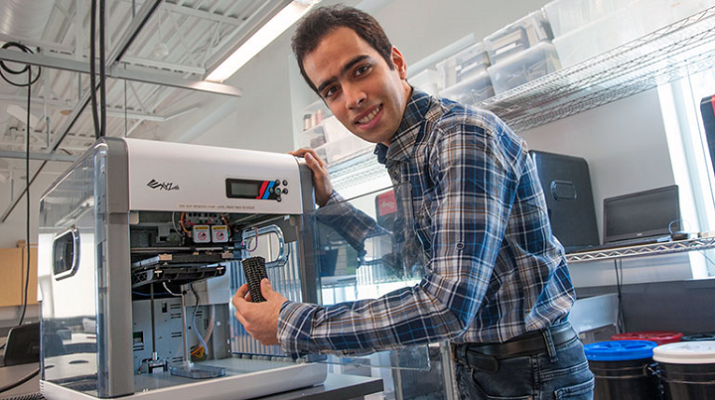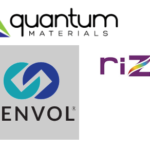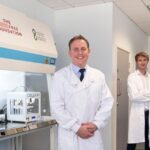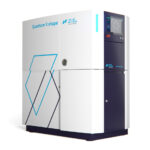
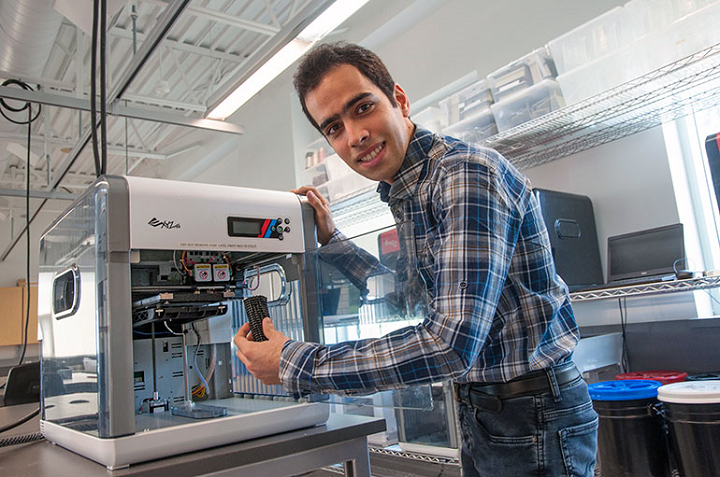
3D printing research at the University of British Columbia (UBC) Okanagan has previously focused on quantum 3D printing, a unique algorithm for creating 3D shapes, and 3D printed devices that can assess water quality; now, a research assistant with the university’s School of Engineering is modeling and creating 3D printable artificial bone grafts, and studying the future potential of the grafts in terms of artificial bone replacements.
According to Hossein Montazerian, human bone is very resilient, but replacing injured bones can be painful, and also require multiple surgeries. Surgeons have to move bone from one part of the body to anotherwith conventional bone grafts, which can be used to treat defects and traumatic fractures.
Montazerian’s new design for artificial bones can be customized and 3D printed, which means that the replacements will be safer, stronger, and more effective. This customization means that surgeons won’t have to transplant existing bone fragments, as the 3D printed bone grafts could be made to fit any patient.
Montazerian explained, “When designing artificial bone scaffolds it’s a fine balance between something that is porous enough to mix with natural bone and connective tissue, but at the same time strong enough for patients to lead a normal life. We’ve identified a design that strikes that balance and can be custom built using a 3D printer.”
The findings of this research were recently published in a paper, titled “Porous scaffold internal architecture design based on minimal surfaces: A compromise between permeability and elastic properties,” in Materials & Design. Montazerian wrote the paper together with E. Davoodi with Texas Tech University; M. Asadi-Eydivand with the University of Malaya; J. Kadkhodapour, of the Shahid Rajaee Teacher Training University in Iran; and M. Solati-Hashjin, from Iran’s Amirkabir University of Technology.

“In this study, numerical procedures were performed for a library of 240 TPMS-based unit cells (comprised of 10 volume fractions of 24 selected architectures) to explore the role of pore characteristics in determining normalized values stiffness, strength, and permeability. The associated design maps were developed based on which highly porous architectures with extreme properties were selected for experimental evaluations. Calcium sulfate scaffolds were designed based on the critical designs and 3D-printed (using a powder-based technique) in different cell sizes and size effects were addressed,” the abstract reads in part.
Montazerian analyzed 240 different bone graft designs, with his main focus on designs that were both strong and porous. Then, utilizing a powder-based method, he 3D printed the top-performing designs, and figured out how effective they would be in the real world under load by running mechanical compression tests. According to the research paper, the combined numerical and experimental results “suggest a great potential for TPMS-based architectures to be served in design and manufacturing of graded porosity/architecture scaffolds.”
“A few of the structures really stood out. The best designs were up to 10 times stronger than the others and since they have properties that are much more similar to natural bone, they’re less likely to cause problems over the long term,” Montazerian said.
“This solution has enormous potential and the next step will be to test how our designs behave in real biological systems. I hope to see this kind of technology clinically implemented for real patients in the near future.”
The paper also explains that changing the unit cell size did not make any “significant difference” in the compressive behavior of the 3D printed scaffolds. Montazerian said that this technology still has a way to go before being widely used for clinical purposes, and mentioned that other researchers are working to refine 3D printable biomaterials that the body will not reject. In the meantime, the UBC research assistant and his fellow co-authors are working on the next generation of these innovative designs, which will “use a mix of two or more structures.”
“We hope to produce bone grafts that will be ultra-porous, where the bone and connective tissues meet and are extra-strong at the points under the most stress,” Montazerian said. “The ultimate goal is to produce a replacement that almost perfectly mimics real bone.”
Discuss in the 3D Printed Bone Grafts forum at 3DPB.com.
When it comes to 3D real estate visualization in the USA, our service provides the perfect solution for bringing property listings to life. Through our platform, you can easily access cutting-edge 3D renderings that showcase your real estate projects in a way that attracts potential buyers and investors. Whether it's residential, commercial, or mixed-use properties, our team of experts uses advanced technology to create immersive visualizations that highlight the best features of your property, making it easier for clients to imagine the space as their own.
Through our website, you can quickly get high-quality 3D real estate visualizations that are tailored to your specific needs. With our help, you'll stand out in the competitive real estate market by offering potential buyers a realistic, interactive view of your property. Our efficient process ensures a fast turnaround time, while our attention to detail guarantees that every aspect of the property is represented accurately, giving you a powerful marketing tool to promote your real estate listings.


